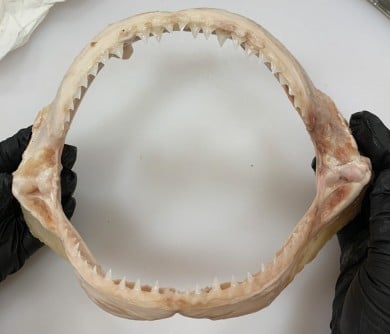Illegal Shark Trade Thrives in Australia and New Zealand: Study Reveals

Research from the University of Adelaide’s School of Biological Sciences and Wildlife Crime Research Hub has uncovered significant evidence of illegal shark product trade between Australia and Aotearoa/New Zealand. The study, published in Pacific Conservation Biology, highlights the movement of these products, often transported in personal luggage and mail, suggesting uses ranging from personal consumption to resale.
Most shark products seized upon entry to Australia originated from Asia, with fin products being the most common. Meanwhile, trophy items, such as preserved specimens, were predominantly from the United States. According to Josephine Lingard, a PhD candidate at the University of Adelaide,
“Over one third of chondrichthyan species, which includes sharks and shark-like rays, are currently threatened with extinction, with all threatened shark species also overfished.”
Global Demand and Regional Impact
The global demand for shark products, particularly fins used in shark fin soup—a delicacy and status symbol in Southeast Asia—remains high. Despite a global increase in shark meat trade since the early 2000s, the legal trade of shark fins, where fins are attached to the body upon landing, is on the decline.
Asia was also the leading region of origin for shark products entering Aotearoa/New Zealand. However, Oceania, with Australia as a key player, closely followed. Lingard noted the unexpected dominance of Australia as a source for these products, despite a decline in seizures over time.
Reasons Behind the Trade Patterns
Lingard suggests that Aotearoa/New Zealand’s geographic position and international flight connections might contribute to the unexpected seizure patterns. She also posits that sharks could be caught and processed in Australia before being transported to Aotearoa/New Zealand, or that Australia serves as a stopover for passengers from other regions.
Challenges in Conservation Efforts
The study relied on border seizure data from both countries to trace the origins of shark products and identify country-specific trading patterns over time. However, the lack of detailed species information in the seized products poses a significant challenge to conservation efforts.
Lingard highlighted that
“Less than 1 per cent of seizures from both countries contained species-specific information, but 14 of the 18 seized species that were identified were listed on the Convention on International Trade in Endangered Species.”
This lack of detailed data mirrors the broader issue in shark fisheries, where species are often grouped under harmonized system codes, complicating conservation management and monitoring efforts.
Need for Improved Data Collection
Increased efforts to gather and document accurate species information in wildlife seizures are crucial. Such data would enhance understanding of illegal trade patterns and drivers, ultimately aiding in the conservation of threatened species.
Looking Ahead: Institutional Developments
In a related development, the University of Adelaide and the University of South Australia are set to merge, forming Adelaide University, which will officially open in January 2026. This new institution aims to bolster research and educational initiatives, potentially contributing to wildlife conservation efforts.
The findings of this study underscore the pressing need for international cooperation and enhanced regulatory frameworks to combat the illegal shark product trade. As conservationists and policymakers grapple with these challenges, the role of robust data and cross-border collaboration becomes ever more critical.






